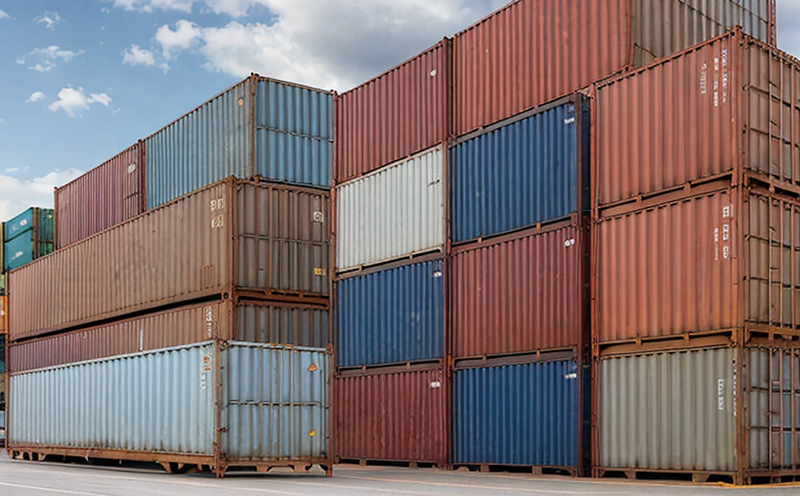IEC 62321 Hazardous Substance Compliance Testing for RoHS Exports
The IEC (International Electrotechnical Commission) 62321 standard is a critical requirement for manufacturers and exporters of electrical and electronic equipment destined for the European Union market. This standard ensures that products do not contain hazardous substances as defined by Directive 2011/65/EU, commonly known as the Restriction on Hazardous Substances (RoHS). Compliance with IEC 62321 is essential for avoiding regulatory non-compliance and associated fines, as well as maintaining brand reputation.
The standard covers a wide range of electrical and electronic products including household appliances, IT hardware, medical devices, and toys. The testing ensures that the products do not contain substances such as lead (Pb), mercury (Hg), cadmium (Cd), hexavalent chromium (CrVI), polybrominated biphenyls (PBB) or polybrominated diphenyl ethers (PBDE), which are known to be harmful to human health and the environment.
The testing process involves a series of steps that include sample preparation, analysis, and reporting. The samples are taken from the product under test (POT). Once collected, they undergo rigorous chemical analysis using methods such as Inductively Coupled Plasma Mass Spectrometry (ICP-MS), Gas Chromatography-Mass Spectrometry (GC-MS), or High Performance Liquid Chromatography (HPLC).
The acceptance criteria are stringent and align with the RoHS Directive. The results of these analyses must be below the specified limits for each hazardous substance to pass the test. For example, the limit for lead in electrical equipment is 1000 ppm (1%). If a sample contains more than this limit, it fails the test.
Compliance with IEC 62321 is not only about avoiding penalties but also about ensuring product safety and sustainability. By adhering to these standards, manufacturers can demonstrate their commitment to responsible production practices, which can enhance consumer trust and improve market access.
- Sample Preparation: Proper handling of samples to ensure accuracy in testing.
- Analysis Methods: Use of advanced analytical techniques like ICP-MS, GC-MS, or HPLC.
- Acceptance Criteria: Meeting RoHS Directive limits for each hazardous substance.
The importance of this test cannot be overstated. It is a key step in the quality assurance process and helps ensure that products are safe for consumers and environmentally friendly. This testing service supports government agencies, trade facilitation organizations, and businesses in ensuring compliance with international regulations.
Applied Standards
The IEC 62321 standard is part of a larger framework aimed at reducing the environmental impact of electrical and electronic products. This standard specifically focuses on the content of hazardous substances to ensure that they are not present in levels that could pose risks to human health or the environment.
IEC 62321 is aligned with other international standards such as ISO, ASTM, EN, and IEC itself. These standards provide a consistent framework for testing and compliance across different regions and industries. For example, the European Union's RoHS Directive directly references these standards to ensure that all products entering the market meet the necessary safety and environmental criteria.
The standard is regularly updated to reflect new scientific findings and technological advancements in the field of electronics manufacturing. This ensures that it remains relevant and effective in addressing current and emerging risks associated with hazardous substances.
Why Choose This Test
- Legal Compliance: Ensures compliance with RoHS Directive requirements, avoiding potential legal issues and fines.
- Market Access: Facilitates entry into the European Union market by ensuring product safety and environmental friendliness.
- Consumer Trust: Enhances brand reputation and consumer confidence through demonstrated commitment to safety and sustainability.
- Environmental Responsibility: Contributes to reducing the environmental impact of electrical and electronic products.
Choosing this test is not just about meeting regulatory requirements; it's about setting a high standard for product quality and responsibility. It ensures that your products are safe, reliable, and environmentally friendly, which can have long-term benefits for your business and reputation.
Use Cases and Application Examples
The IEC 62321 Hazardous Substance Compliance Testing is applicable to a wide range of electrical and electronic products. This includes consumer electronics such as smartphones, laptops, and televisions; industrial equipment like machinery and control panels; and medical devices such as MRI machines and pacemakers.
For consumer electronics, compliance with this standard ensures that the products do not contain harmful substances that could leach out during use or disposal. For industrial equipment, it guarantees safety in operation while minimizing environmental impact. In the case of medical devices, compliance is crucial for patient safety and regulatory approval.
A practical example would be a manufacturer of a new laptop model. Before launching this product into the market, they undergo IEC 62321 testing to ensure that all components comply with RoHS requirements. This includes checking the motherboard, keyboard, display, battery, and other internal and external parts for any prohibited substances.
In another example, a medical device manufacturer might use this test to verify compliance when submitting a new product for regulatory approval. By passing this test, they can ensure that their device meets all necessary safety standards before being allowed on the market.





